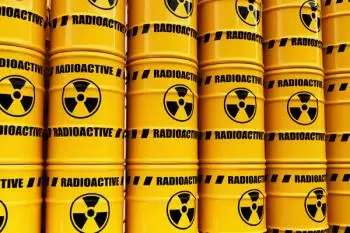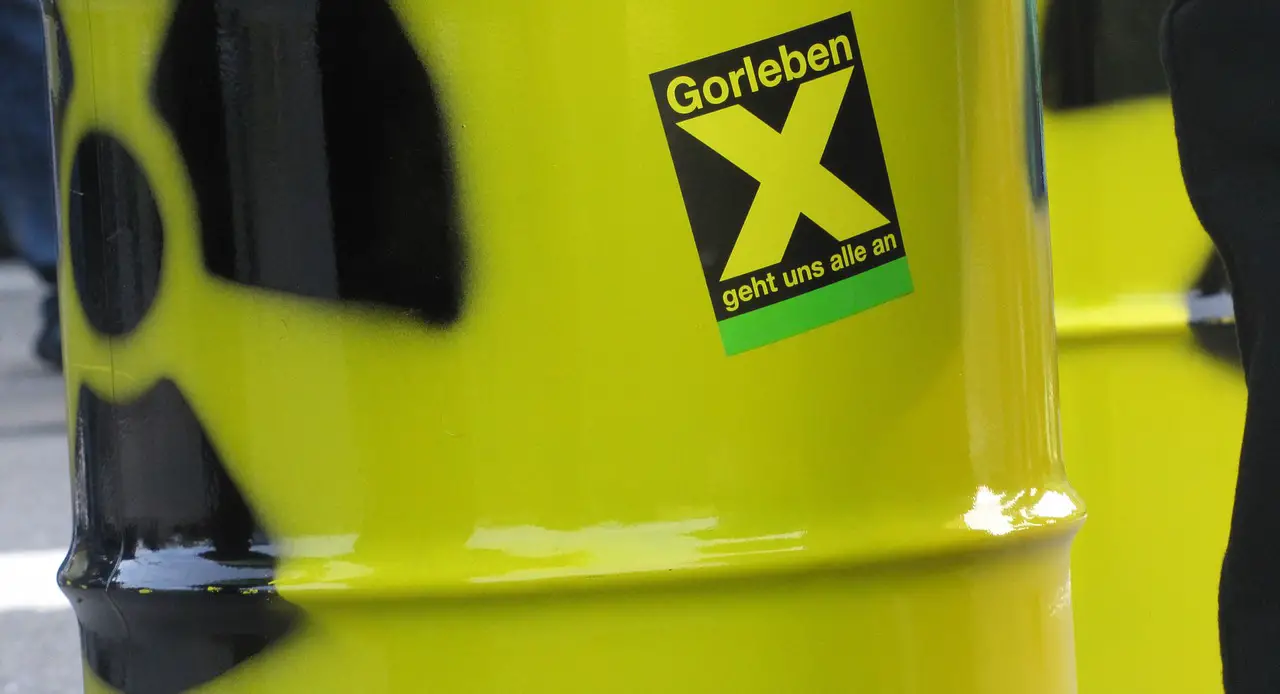
Nuclear energy is one of the most potent energy sources. However, its use entails nuclear waste generation. Moreover, radiological waste is dangerous from a health point of view and has the problem that it does not disappear.
For this reason, it is convenient to have a plan for the protection of future generations. Usually, nuclear waste ends up in a geological disposal site after some process.
We define nuclear waste as any material derived from nuclear energy use containing radioactive isotopes for which reuse is not anticipated. Most of the nuclear waste generated comes from spent nuclear fuel in nuclear power plants.
However, other human activities generate radioactive waste, for example, in medical centers, nuclear research facilities, and some industry sectors.
Much nuclear waste has been recognized as toxic only many years after it appeared in the industry's history. Moreover, this recognition has often come after serious environmental emergencies, thanks to the pressure of public opinion.
With the first nuclear power plants, engineers implemented solutions for nuclear waste treatment. However, much earlier, at the end of the economic boom, greater alarmism and distrust of these issues developed among the folks.
How is radioactive waste generated?
The primary sources of nuclear waste are the following:
-
Commercial nuclear power plants. After nuclear reactions, spent nuclear fuel contains large amounts of radioactive uranium, plutonium, cesium, and many other isotopes. In addition, the dismantling of a nuclear plant generates a high number of contaminated elements: sand, pipes, iron rods, etc.
-
Uranium mining and nuclear fuel processing plants.
-
 Nuclear medicine used in hospitals generates a wide range of light radioactive waste.
Nuclear medicine used in hospitals generates a wide range of light radioactive waste. -
Many industries, such as oil and specific research centers, produce light radioactive waste.
-
In the development of nuclear weapons and reusable nuclear fuel, radioactive material is released that cannot be used for anything.
-
The radioactive waste processing industry also supplies radioactive waste.
The waste can come from a very different nature:
-
Solid substances, for example, spent fuel rods, filters, tools, soil, and clothing
-
Liquid substances such as cooling water or solvents that contain radioactive substances.
In principle, any form of waste that is radioactively contaminated is classified as radioactive waste.
How is the radioactive waste disposed?
In the United States, according to The Environmental Protection Agency (EPA), these are the disposal practices for each type of nuclear waste. It also describes the way they are regulated.
The European Commission recommended unifying criteria to classify the types of radioactive waste. For this, since January 1, 2002, the proposal was as follows:
Transitional nuclear waste
They are generally medical waste, which disintegrates during the temporary storage period. Subsequently, it can be managed as non-radioactive waste.
Low and intermediate-level waste
This type of waste generates a low level of heat energy. In turn, it is classified into:
-
Short-lived waste that is contaminated with a half-life of less than or equal to 30 years
-
Long-lived radioactive waste has alpha particle emitters and radionuclides in high concentrations with a half-life of more than 30 years.
 Medium level nuclear waste is generated by radionuclides released in the fission process in small quantities. These amounts are much lower than those considered dangerous for the safety and protection of people.
Medium level nuclear waste is generated by radionuclides released in the fission process in small quantities. These amounts are much lower than those considered dangerous for the safety and protection of people.
The radioactive elements contained in these by-products are separated with a particular treatment. Subsequently, the resulting waste is deposited in steel cylinders solidifying with tar, resins, or cement.
Low-level radioactive nuclear waste (clothes, tools, etc.) is pressed and mixed with concrete to form a solid block. These elements are also placed in steel cylinders in disposal facilities like in the previous case.
High-level waste
High-level nuclear waste has such a concentration of radionuclides that thermal generation during storage and disposal must be considered. This type of waste is obtained mainly from the treatment and conditioning of spent fuel. These residues can be active for thousands of years.
The treatment of this type of waste is carried out in three stages:
-
Initial storage: once the fuel in a nuclear power plant has been spent, it is removed. The spent fuel is firstly stored in a pool of water inside the plant. This action reduces the heat and creates the first barrier to radiation.
-
Intermediate storage: At this point, the spent fuel is stored for between 20 and 60 years in spent fuel pools or dry containers. These containers are located in a centralized temporary warehouse arranged in the same plant. On the other side, they can also be stored in a separate warehouse outside the plant.
-
Permanent disposal: Finally, the radioactive waste is stored in a deep geological repository. This nuclear waste repository is an internationally accepted option for the final management of this type of nuclear waste.
Risks associated with radioactive waste
Radioactive waste can emit heat and ionizing radiation. Depending on its intensity and nature, it can affect living beings and nature.
Risks of ionizing radiation
Irradiation is the transfer of energy from one radioactive material to another without physical contact. On the other hand, radioactive contamination is the presence of radioactive materials on any surface, matter, or medium, including people.
Ionizing radiation does not represent any risk to our health. Radiation coexists with us since it is found in nature. However, misuse of ionizing radiation can have detrimental effects on health.
Since the discovery of X-rays and radioactive elements, the study of the biological effects of ionizing radiation has received a permanent boost. The cause was its increasing use in medicine, science, industry, and peaceful and military uses of atomic energy.
How are living tissues affected by radiation exposure?
The ionizing energy passing through living cells gives rise to ions and free radicals that break chemical bonds, causing molecular changes. In principle, any part of the cell can be altered by ionizing radiation. However, DNA is the most critical biological target due to genetic information.
An absorbed dose high enough to kill a dividing cell type would be enough to cause several lesions in its DNA molecules. In addition, the DNA molecules damaged can turn into mutations.
If severe damage occurs due to irradiation, the cell will die. If the number of dead cells is small, there will be no consequences since our body can replenish them. However, if the number of cells killed in tissue is high, a significant effect will occur. These effects occur after exposure to high doses of radiation and are known as tissue reactions.
What are the effects of receiving radiation exposure?
The first effects, or the least severe, appear only from doses of 1 Gy (Gray). A dose of this magnitude can only be given in the case of a radiological accident. Generally, these first effects consist of vomiting, redness, or skin superficial. When the doses are higher, diarrhea, hair loss, and sterility can manifest.
The person who received the highest dose of radiation was Hisashi Ouchi after an accident in Tokaimura’s plant.
But not always exposure to radiation causes cell death. At low doses, the damage is milder and usually involves an alteration in the DNA molecule - genetic mutation.